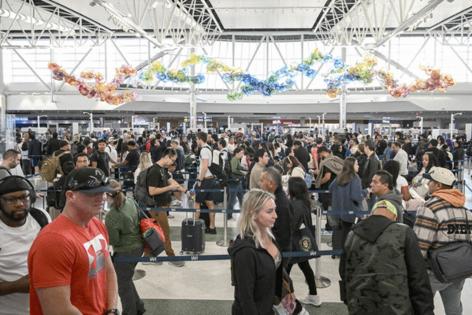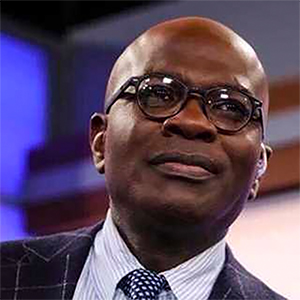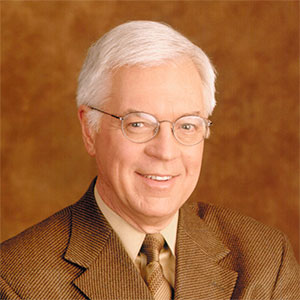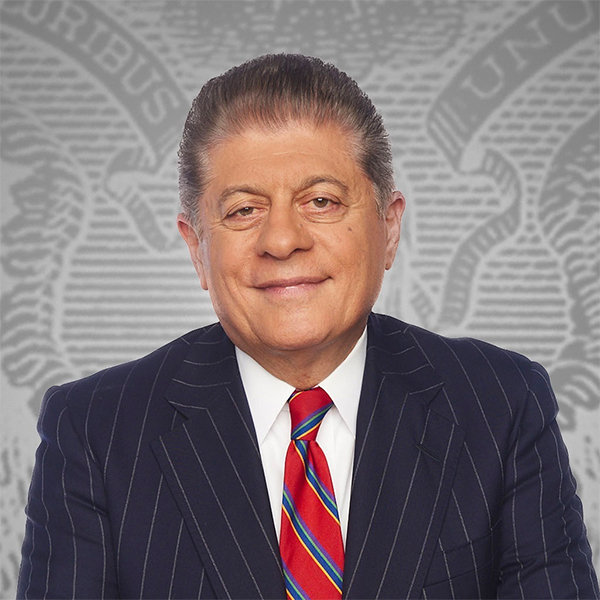Transportation Secretary Duffy warns of more flight cuts if government shutdown drags on
Published in Political News
WASHINGTON — U.S. officials warned that the number of flight cancellations may need to double if the government shutdown drags out and air-traffic controller staffing shortages worsen, potentially escalating travel disruptions as the country heads into one of its busiest travel seasons.
U.S. Transportation Secretary Sean Duffy said Friday on Fox News that regulators will continue to assess the strain on the aviation system and if the data moves in the wrong direction, the current plan to reduce flights by 10% by the end of next week could grow to 15% or even 20%.
With hundreds of services already trimmed and more on the way, air travel has become a flash point in the long-simmering clash between Republicans and Democrats over federal funding as President Donald Trump ramps up pressure to forge a deal.
The Republican-led administration has said the reductions are necessary to keep flying safe as staffing shortages strain resources. At least one top congressional Democrat has called for more transparency to ensure the move isn’t politically motivated.
Out of 25,375 flights scheduled for Friday, about 3% had been canceled as of 1 p.m. New York time, according to data compiled by aviation analytics company Cirium. United Airlines Holdings Inc., Delta Air Lines Inc. and American Airlines Group Inc. are the most affected.
Despite the disruptions, there have been many worse days for U.S. air travel since January 2024, with Friday so far ranking 72nd in terms of cancellations, according to data provided by Cirium earlier.
“Probably right now it’s more akin to a snowstorm or a stretch of bad weather than a catastrophic breakdown,” Tom Fitzgerald, an analyst at TD Cowen, said in a Bloomberg Television interview. “The swing factor will depend on how long this lasts. I would say all the major airlines are going to feel this.”
The full 10% reduction will create a $100 million-a-day drag for airlines, former New Hampshire Gov. Chris Sununu, the president and chief executive officer of industry trade group Airlines for America, said in an interview with Bloomberg TV Friday.
Airlines have experience navigating disruptions such as storms or technical outages, and the carriers are likely to mitigate the fallout by cutting capacity on their less-busy routes. United has said reductions fall on regional and domestic mainline flights that don’t travel between its primary hubs.
The reductions also don’t apply to international flights, according to the emergency order the Federal Aviation Administration released Thursday. The directive does, however, ban commercial space launches and reentries during certain hours beginning Monday.
At New York’s LaGuardia Airport, business was running mainly as usual Friday as of 2:15 p.m. local time, with 20 flights to destinations including Oklahoma City or Boston canceled. Disruptions at other large airports were also manageable, with 23 canceled flights at Newark Liberty International Airport near New York, 42 at O’Hare International Airport in Chicago and 28 at Los Angeles International Airport, according to data from flight-tracking website FlightAware. Overall cancellations were more than 850.
Still, the frustration over the government funding lapse is beginning to show with travelers, though they expressed sympathy for airport staff showing up without pay.
“I admire them for coming to work,” said Dede Gonzales, who arrived at LaGuardia four hours before her flight after reading about the cancellations. “It’s terrible that they are working right now and are not getting paid.”
The U.S. Transportation Department and FAA first announced Wednesday that they would order airlines to cut 10% of domestic flight capacity across 40 major airports in an effort to relieve pressure on the aviation system. Thursday’s order requires carriers to start with 4% reductions on Friday and gradually increase to that 10% target by the end of next week.
“I’m trying to get people where they want to go, and get them there safely,” Duffy said in an interview with CBS News on Friday. “If people want to question us, I would throw it back at them, open up the government. We have to take unprecedented action because we are in an unprecedented situation with a shutdown.”
Later on Fox News, he said if staffing improves, it’s also possible the cuts go in the other direction, he said. “This is a moment-by-moment assessment,” he added.
The big four airlines, which are exposed to the largest hubs in the country, are likely to be the most affected in November and December, according to a report from Sheila Kahyaoglu, an analyst with Jefferies. The 10% cut implies American, Delta, Southwest, and United will have to trim overall seat capacity by roughly 6%.
“We’re running a nearly full schedule today and the vast majority of our customers won’t be impacted,” American Airlines said in a statement Friday. The carrier, which is slashing about 220 flights each day through Monday, said it’s still serving every market it did before the cuts.
Still, CEO Bob Isom said in an interview with CNBC Friday that the capacity cuts have started impacting bookings for the all-important Thanksgiving period, when many Americans will be traveling.
United Airlines said it will see about 510 services culled between Friday and Sunday, including 184 on Friday. Delta said it was canceling about 170 flights for Friday, and Southwest Airlines Co. said it was removing roughly 120 flights from its schedule for the day.
According to the Thursday order, the FAA reviewed voluntary safety reports from October and found users of the aviation system were worried about its performance.
More than 13,000 controllers have been forced to work without pay, taking both an emotional and financial toll. Shutdowns often coincide with more controllers — as well as Transportation Security Administration agents also working without pay — calling in sick.
_____
(With assistance from Joe Mathieu, Tyler Kendall, Danny Lee, Annmarie Hordern, Jonathan Ferro, Lisa Abramowicz and Leen Al-Rashdan.)
©2025 Bloomberg L.P. Visit bloomberg.com. Distributed by Tribune Content Agency, LLC.
























































Comments